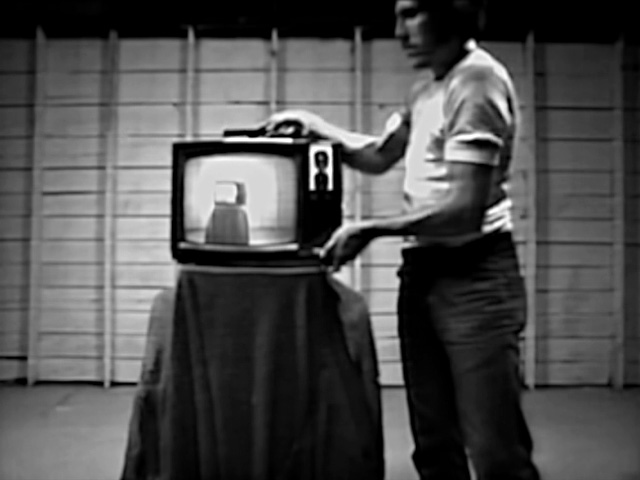In the 1970s, James Byrne developed a distinctive, body-based method of image making, in which he used the hand-held portable camera as a gestural extension of the body in a physical exchange with his subject. Byrne explored this aesthetic primarily in innovative video dance collaborations that were choreographed and performed specifically for video.
1974-78, 17:10 min, b&w, sound
Translucent
1974, 2:15 min, b&w, sound
Both
1974, 3:38 min, b&w, sound
Works for Broadcast
1977, 4:23 min, b&w, sound
I Like Mechanics Magazines
1978, 6:21 min, b&w, sound
1979, 9:25 min, color, sound
1979, 7:54 min, b&w, sound
1985, 5:55 min, color, sound
1985, 28:31 min, color, sound
The Members of My Party
1985, 5:14 min, color, sound
Habitat
1985, 5:32 min, color, sound
Vision
1985, 5:25 min, color, sound
this Body, this Place, Unnamed
1985, 5:20 min, color, sound
Beside Herself
1985, 5:03 min, color, sound
1985, 6:03 min, color, sound
1985, 14:53 min, color, sound
1986, 8:10 min, b&w, sound
1986, 15:44 min, color, sound
1987-89, 65:36 min, color and b&w, sound
Fields
1987, 11:11 min, color
Inside Eyes
1987, 10 min, color, sound
Undertow
1988, 7:59 min, b&w, sound
Bodies of Water Remembered
1988, 8:10 min, color
That Means I Want to Go Home
1988, 27:23 min, color, sound
